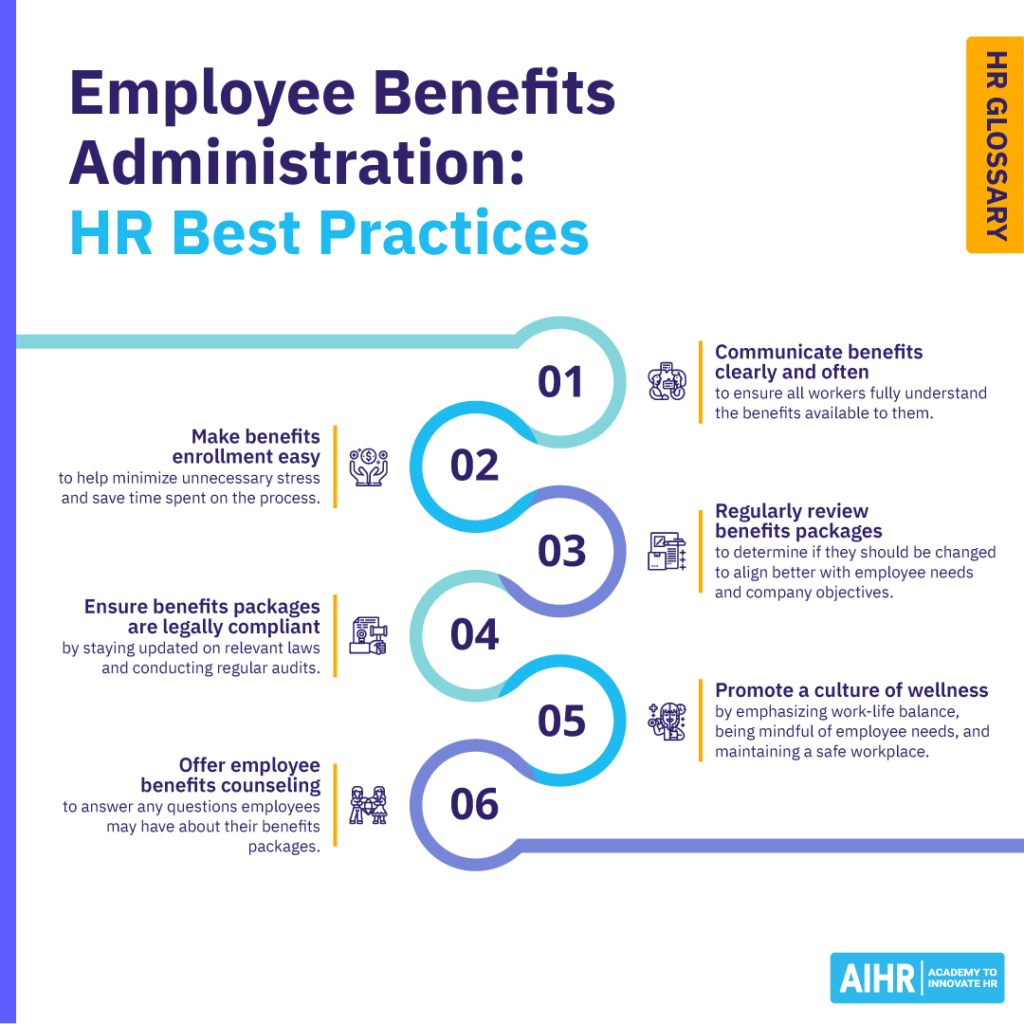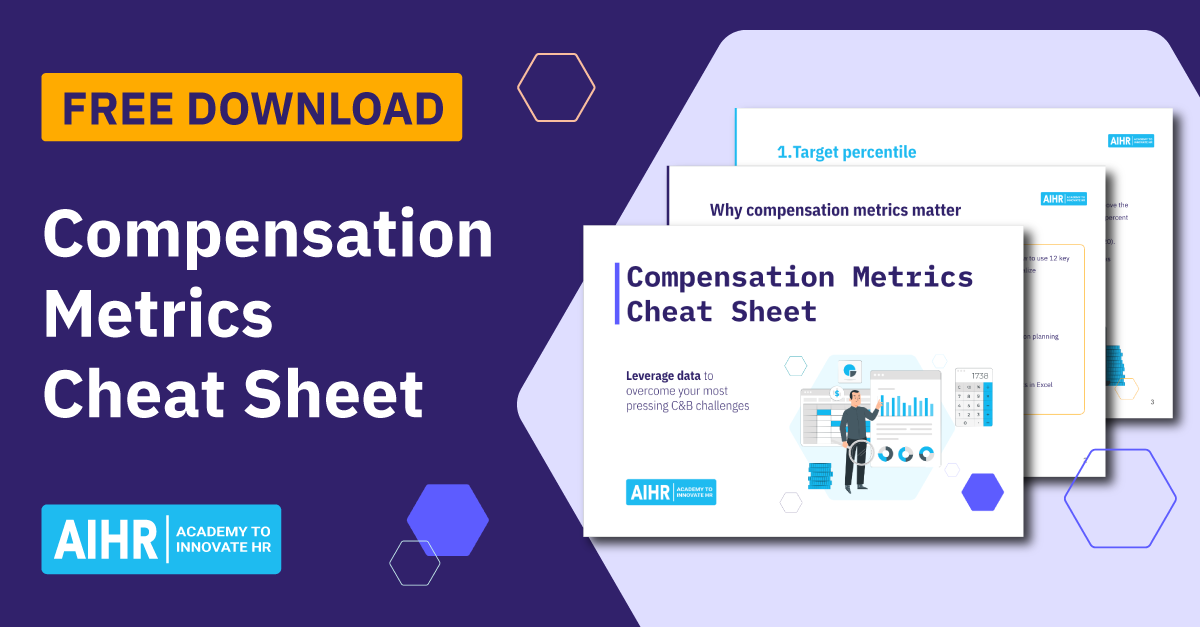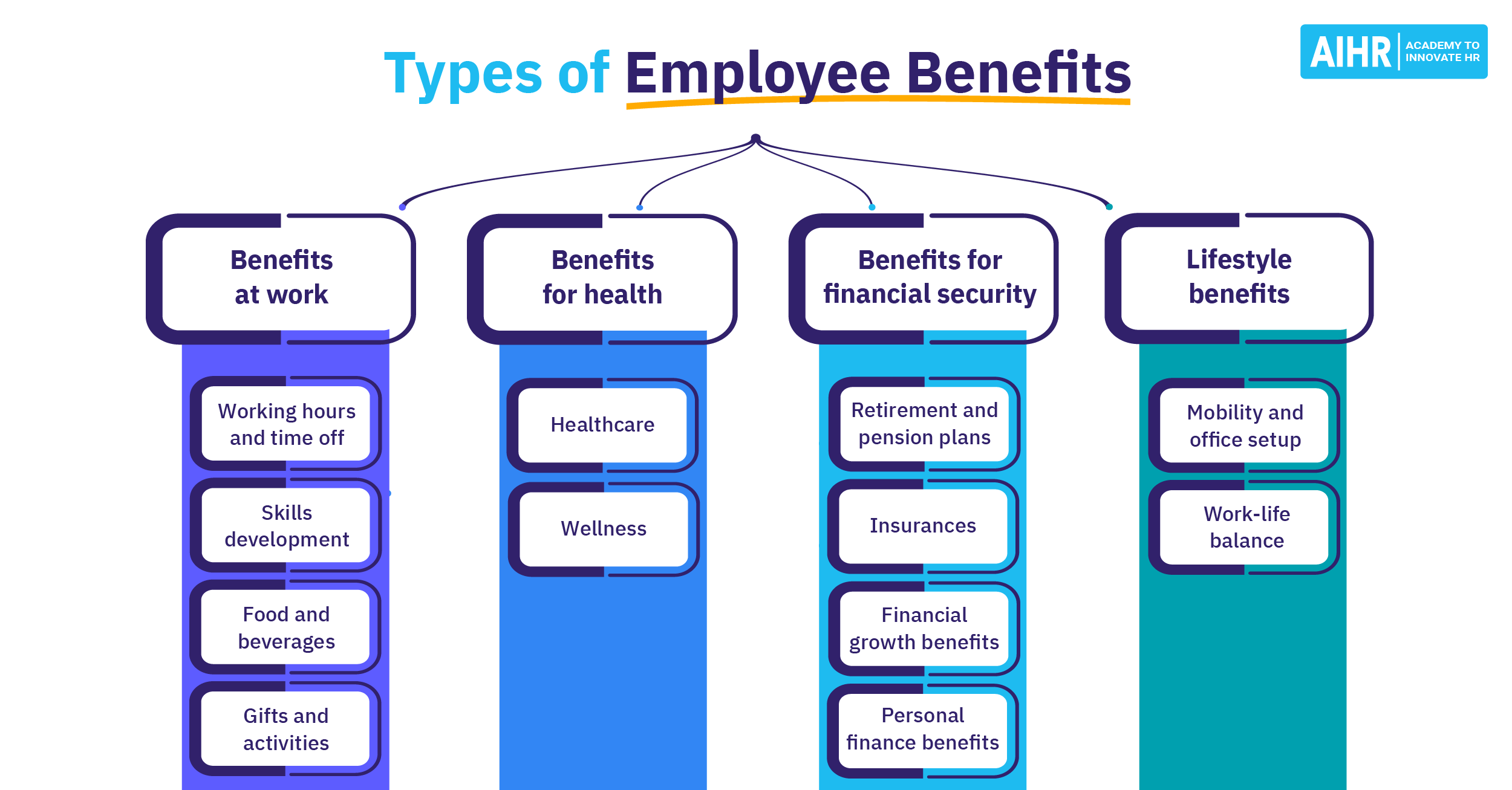Employee Benefits Administration
What is employee benefits administration?
Employee benefits administration involves administrators managing and overseeing the employee benefits offered to employees to ensure organizations remain legally compliant.
This area focuses on offering fair and effective benefits that support employees’ wellbeing and productivity. Administrators typically design benefits packages that align with both employee needs and company objectives. They also play a key role in communicating available benefits, guiding employees through enrollment, and helping them make use of their options.
In addition, benefits administrators coordinate with insurance providers and vendors and stay informed on the specific benefits their organization offers.
What are employee benefits?
Employee benefits are additional compensation employees receive in addition to their regular salaries, and can be financial or non-financial. They can include a wide range of perks designed to improve employee wellbeing, job satisfaction, and retention.
In addition to reasonable wages, employees nowadays typically expect appealing benefits from their employers. In fact, an estimated 86% of U.S. private sector employees worked for companies that offered employer-sponsored health insurance. Here are some common employee benefits employers may offer:
Life, health and disability benefits
- Health insurance: Medical, dental, and vision insurance to maintain overall employee wellbeing, as well as protection from and support through illness.
- Health and flexible savings accounts: Tax-free funds for participating employees to pay for medical and childcare-related expenses.
- Disability insurance: Short- and long-term financial benefits for employees who cannot work for specific periods of time due to serious health issues.
- Life insurance: Benefits for every insured employee’s beneficiaries in the event of their death.
- Long-term care insurance: Cost coverage for long-term care services, such as assisted living or nursing home care.
Personal and family benefits
- Paid time off: Employee benefits that allow employees to earn and take paid time off (PTO) for personal reasons.
- Retirement savings: Employee financial benefits such as 401(k) plans, pension plans, and other retirement savings options.
- Commuter benefits: Reimbursement for employees’ work-related travel expenses.
- Housing and corporate benefits: Employer discounts for or payment of job-required housing and other discounted perks for employees.
- Pet insurance: Veterinary care insurance for employees who are pet owners.
- Family leave: Allows employees to take PTO or unpaid time off for maternity or paternity leave or to care for sick family members.
- Childcare stipends: Financial support for childcare costs and daycare subsidies.
Corporate and workplace benefits
- Corporate wellness: Support for employees experiencing physical, emotional, and mental health challenges, including substance abuse treatment and employee assistance programs (EAP).
- Workers’ compensation insurance: Required of all employers to support medical care costs in the event of work-related injuries or illnesses.
Education and training benefits
- Tuition reimbursement: Employer assistance in paying for employees’ educational expenses.
- Professional development: Employer-sponsored or subsidized training and development programs for employees.
- Debt and student loan support: Financial employer support for employees paying off their college loans.
Elevate your expertise in employee benefits administration
Effectively managing employee benefits is essential to support workforce wellbeing and ensure organizational compliance.
In AIHR’s Compensation & Benefits Certificate Program, you’ll gain skills to design, communicate, and administer competitive benefits packages that align with business goals and support employees’ diverse needs.
This online, self-paced Certificate Program will also provide hands-on experience with the latest HRIS tools, benefits software, and strategies for compliance, allowing you to streamline administration and enhance employee engagement.
Types of employee benefits administration software
Employee benefits administration software helps streamline the often complex process of managing employee benefits.
Options range from dedicated benefits administration platforms to integrated HRIS solutions that include benefits management. Cloud-based systems offer scalability, while outsourcing to third-party providers is also an option.
Here are some well-known types of employee benefits administration software:
- Workday: Enterprise-focused HR and benefits management platform.
- ADP Workforce Now: Comprehensive solution for benefits, enrollment, and wellness.
- BambooHR: Integrated HRIS with benefits administration features.
- TriNet: Full-service HR system with built-in benefits tools.
- Insperity: Outsourced benefits administration model.
- Benefitfocus: Cloud-based platform for benefits enrollment and HRIS.
HR tip
Look for benefits software that’s user-friendly, integrates well with HR systems, and offers flexible plan options. Key features to consider are self-service tools, strong data security, reliable reporting, and vendor support to ensure smooth setup and compliance.
HR best practices for employee benefits administration
Tackle the responsibilities of employee benefits administration with these best practices:
- Communicate benefits clearly and often: Ensure all workers fully understand the benefits available to them and how to access them. Use communication channels such as emails, internal communication platforms, and live Q&A sessions to keep everyone informed whenever you introduce new benefits or make changes to existing ones.
- Make benefits enrollment easy: Streamline employee benefits enrollment with self-service tools like a benefits portal, especially during new hire onboarding and annual enrollment. This will minimize unnecessary stress and save time spent on the process.
- Regularly review benefits packages: At least once a year, reassess your company’s employee benefits packages to determine if they should be changed to align better with employee needs and company objectives.
- Ensure benefits packages are legally compliant: Stay updated on employee benefits laws and regulations (regional, state, and federal). Conduct audits regularly to avoid non-compliance, which can lead to potential legal and financial penalties.
- Promote a culture of wellness: Reinforce your organization’s benefits to employees by promoting employee wellbeing. This includes emphasizing work-life balance, being mindful of employee needs, and maintaining a safe workplace.
- Offer employee benefits counseling: Arrange one-on-one sessions to answer questions employees may have about their benefits packages.

FAQ
They manage and oversee all tasks related to their organization’s employee benefits. This can include designing employee benefits packages, providing benefits enrollment support, working with vendors, and ensuring compliance with local, state, and federal requirements.
One example of benefits administration is helping employees to enroll in their health insurance plans using an online benefits system. This can include providing employees with the details they need to make informed decisions about their eligible benefits.









